Right now we are experiencing the busiest time of year for the Southeast Farallon Island! The past couple weeks have been filled with chicks popping out of their eggs, which was really cute and fluffy, but as threshold numbers are reached, we begin Diet Watches for several species. Last post, I talked about Murre Diet Watch. Last night, we started Rhinocerous Auklet Diet Monitoring, and Thursday we begin Pigeon Guillemot Diet Watch. All of this on top of our regular assignments! We’re all kinda pooped.
Yesterday, we said goodbye to new friends Kevin and Cathy of US Fish and Wildlife, who were here for 2 days doing contamination research, and Zach of US Fish and Wildlife and his girlfriend Zoe, who had stayed here for a week doing maintenance work.
Yesterday was very busy for everyone – my schedule included X plot in the morning, Murre diet watch from 9am – 11am, helping with the landing to get Kevin, Cathy, Zach and Zoe and all their stuff onto their boat, doing Pigeon Guillemot Breeding Check most of the afternoon, doing daily checks on my Cassin’s Auklets after that, and Brandt’s Cormorants Resighting around sunset, helping put together a communal dinner, then doing Rhinocerous Auklet netting and processing from 2100-2330.
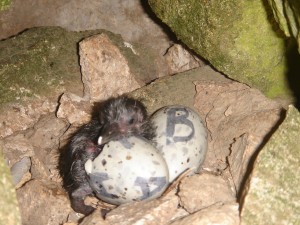 A lot of the Pigeon Guillemots (PIGU) are hatching at the same time! During my check I had 2 pipping eggs and one hatching right out of its egg. Of course I had to get a picture. The eggs are marked A and B because when they were discovered on a previous breeding check, they were found at the same time, so we don’t know which one was laid first (if we did we would label them 1 and 2).
A lot of the Pigeon Guillemots (PIGU) are hatching at the same time! During my check I had 2 pipping eggs and one hatching right out of its egg. Of course I had to get a picture. The eggs are marked A and B because when they were discovered on a previous breeding check, they were found at the same time, so we don’t know which one was laid first (if we did we would label them 1 and 2).
Rhino netting is really really cool (or maybe that’s because I’ve only done it twice so far… it might get old after we do it a dozen times but I doubt it).
First, we assign roles. Pete always does data processing, but us 4 interns switch around the other roles. 2 people are on Rhino patrol, meaning they get a hold of the bird after its hit the net (which is a little difficult since the Rhinos are pretty feisty, strong, and bigger than a football), 1 person is on fish duty, meaning they collect all the fish that the Rhino had in its beak but dropped on impact and put it into a little baggie (Rhinos have these serrations in the roof of their beak that can hold fish there, they can hold about 8 juvenile fish at a time), and one person helps Pete with data processing (which includes getting measurements on the bird like wing cord, weight, beak size, band number), bands them if they’re unbanded, and then helps Pete launch them back into the air (they need a really good throw to get back flying).
When we wait for birds to hit the net, we have to lie down quietly by the sides of the net with our headlamps turned off, and I was a little apprehensive at first since I’m so prone to flea bites from the gull fleas, but last night, with the setting sun behind the cliffs and the bright moon in the sky and all the birds flying to and from sea all around us and calling to each other, and the stars getting brighter and brighter as the night got darker, I became pretty sure I have one of the coolest jobs on the planet.
The Rhino netting ends once 5 Cassin’s Auklets hit the net. So, even though the net is intended for Rhinos, sometimes other birds don’t see it and get caught and need to be disentangled and let go. Our rule is to take down the net once 5 Cassins hit it because its usually about then that suddenly TONS of Cassins will come in and we just end up getting really backloaded disentangling them and with our lights on, the Rhinos won’t hit the net (and if they somehow didn’t see us, it’d really hurt to have them accidentally fly into us at the speed they’re going).
After netting, we take all the fish and record the species, the standard length (length from mouth to end of backbone), the fork length (length from mouth to inside fork of the tail), and mass. Thus, this study is two-fold: it’s both mark re-capture and diet monitoring.
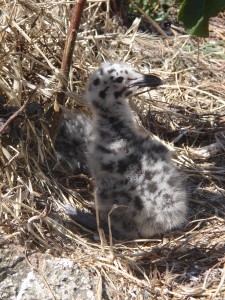 On a side note, the Western Gull chicks have experienced some mass carnage. I’m not doing any of the WEGU plots, but everyone else is and they’re reporting at least 80% disappearance in their plots of eggs or chicks that were there on a previous check. There are lots of dead chicks lying around, which is pretty depressing. Those that made it past their most vulnerable stage are starting to run around like toddlers with their WEGU parents chasing them around. This picture is of a gull chick that’s starting to run around, but isn’t quite big enough to be completely safe from predation. Even chicks this size can get pecked in the head, though it isn’t nearly as common as the really little chicks getting fully swallowed. I’m not sure I can ever eat chicken nuggets again.
On a side note, the Western Gull chicks have experienced some mass carnage. I’m not doing any of the WEGU plots, but everyone else is and they’re reporting at least 80% disappearance in their plots of eggs or chicks that were there on a previous check. There are lots of dead chicks lying around, which is pretty depressing. Those that made it past their most vulnerable stage are starting to run around like toddlers with their WEGU parents chasing them around. This picture is of a gull chick that’s starting to run around, but isn’t quite big enough to be completely safe from predation. Even chicks this size can get pecked in the head, though it isn’t nearly as common as the really little chicks getting fully swallowed. I’m not sure I can ever eat chicken nuggets again.
Anyway, we’ll be doing Rhino netting for 4 nights in a row then 6 nights off then 4 nights on, and so forth, for the next 30 days or so, so my nights will be a little busy!
That’s all for now,
Love, Kristina

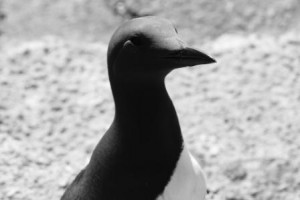
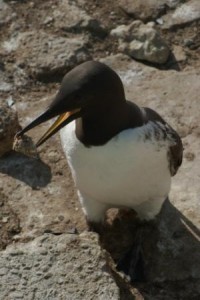
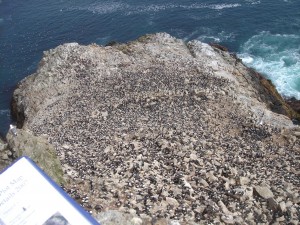
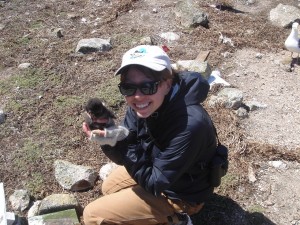
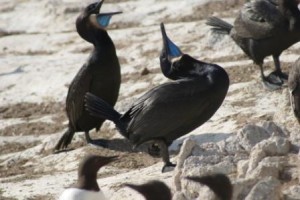
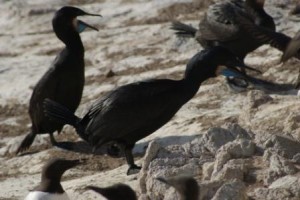
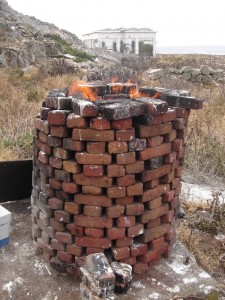
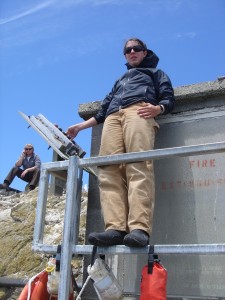
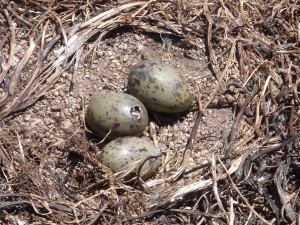
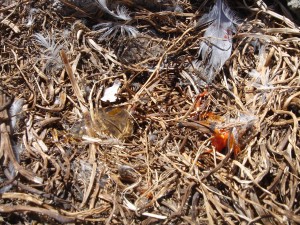
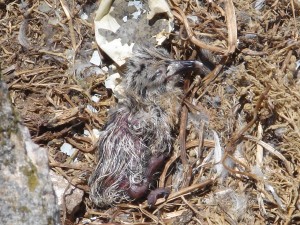
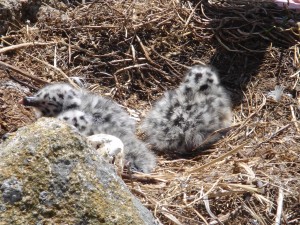
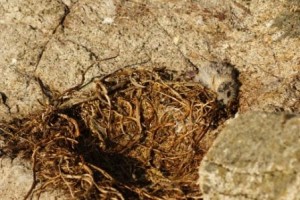
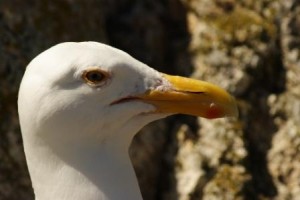
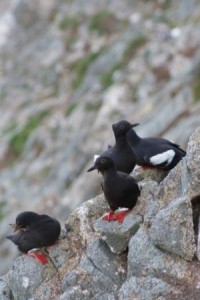
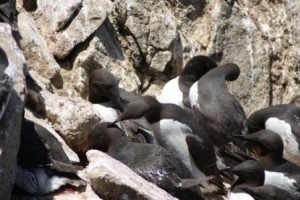
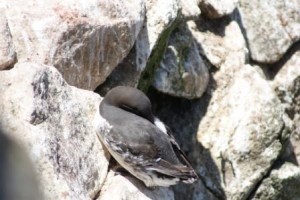
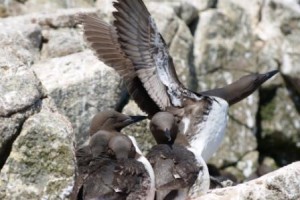
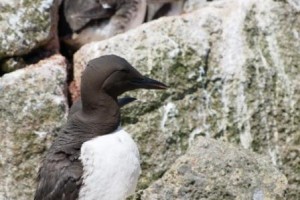
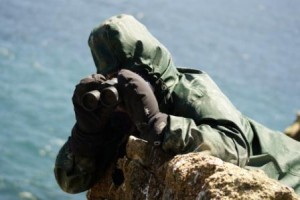
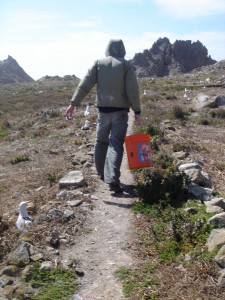
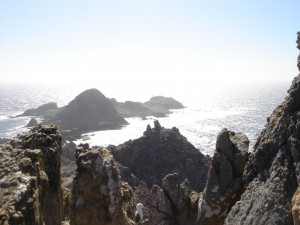
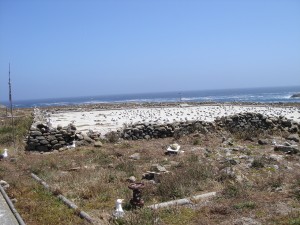
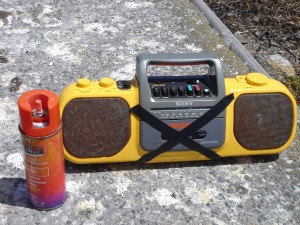
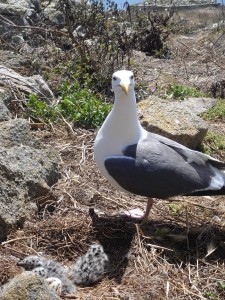
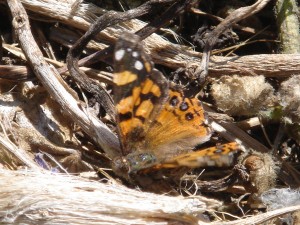
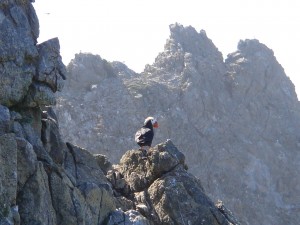
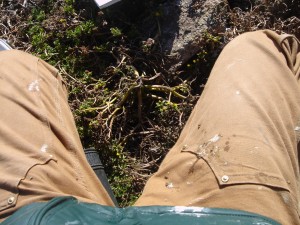
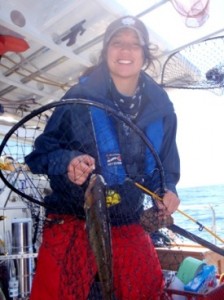
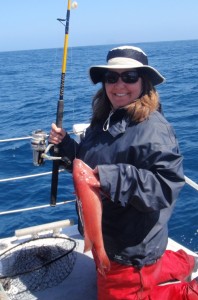
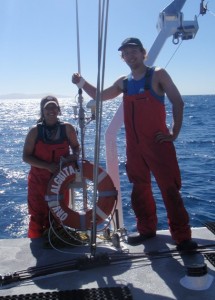
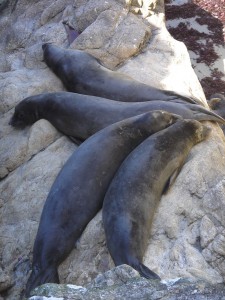
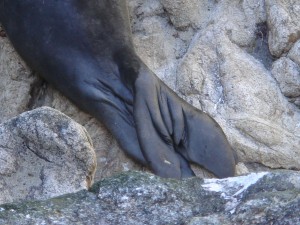

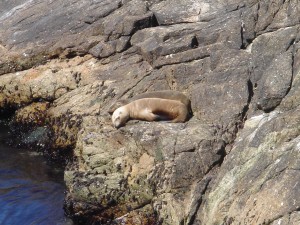
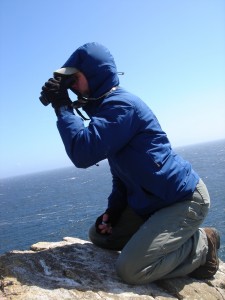
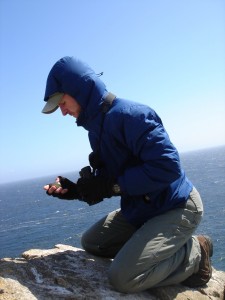
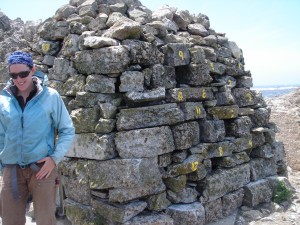
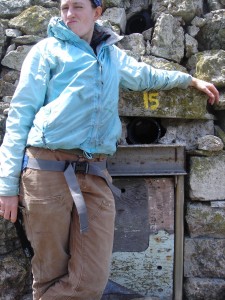
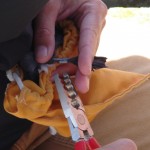
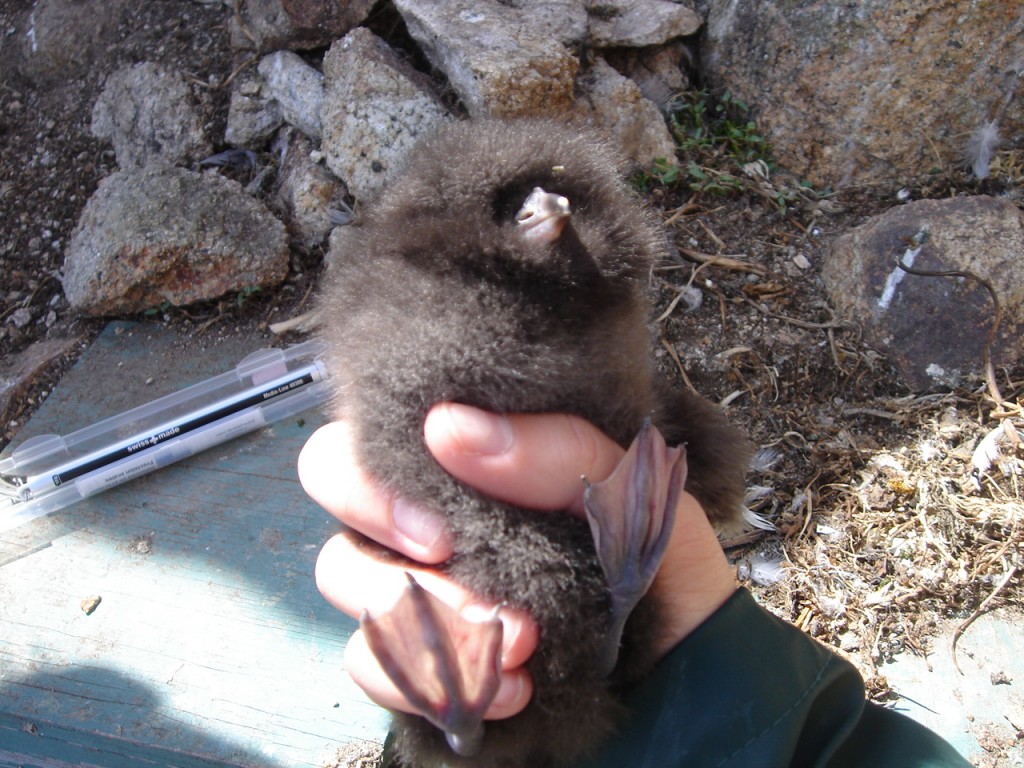
 For reference, this is what an adult RHAU looks like, I got this image off a google search. See the “horn” on its bill? These guys are WAY bigger than the Cassin’s Auklet.
For reference, this is what an adult RHAU looks like, I got this image off a google search. See the “horn” on its bill? These guys are WAY bigger than the Cassin’s Auklet.